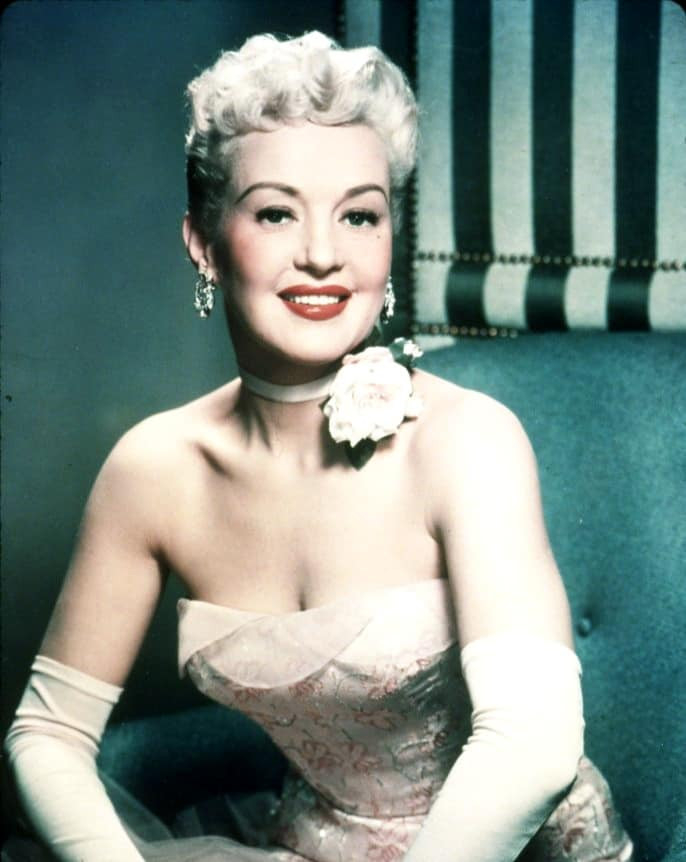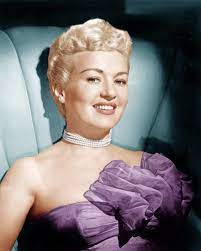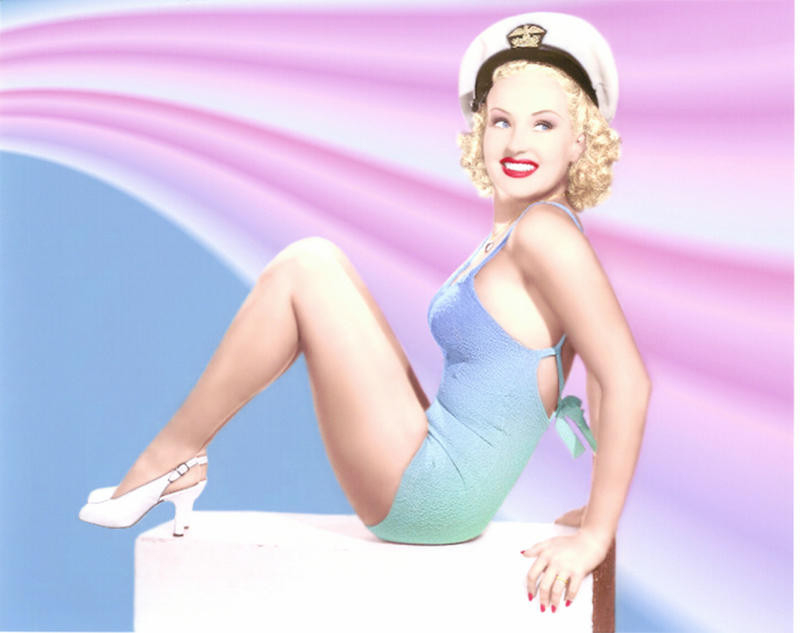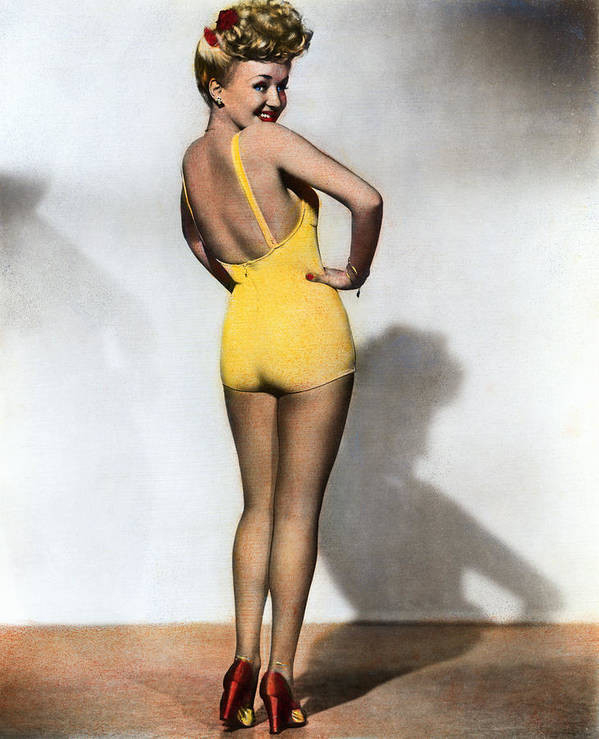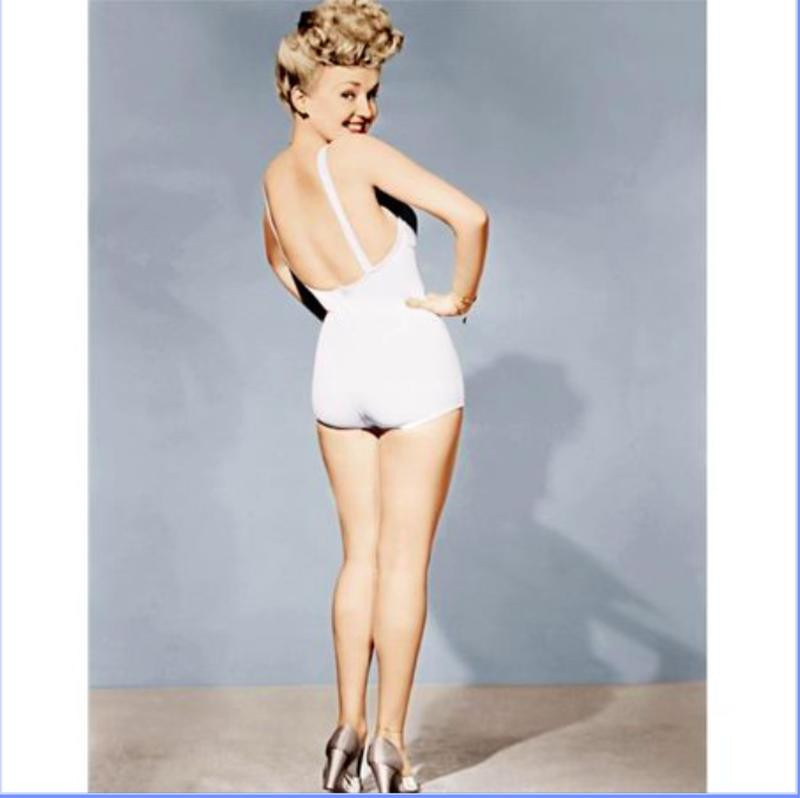CHAMPIONS live forever in the record pages, and movie stars live forever in old film revivals. And since Betty Grable was a grand champion, record-breaking movie star, she will always be alive somewhere, sometime, and not just in the memories of hard‐line fans like me. Nevertheless, it's a terrible shock to realize she's gone. Or, as film buff Eric Spilker told me when we first learned the seriousness of her illness, “I don't want to face a world without Betty."
Actually, we have all been facing such a world for many years now. Betty's death only makes it official. Her last movie was made in 1955, and her true era was, of course, World War II. There is no definition of those years possible which does not include Betty Grable, who unofficially won the war. Whose photograph was marked off in sections to teach fliers how to read aerial maps. The pin‐up girl herself. Dancing lightly, singing slightly, cherries in hair, hands-on-hips, smiling her fabulous smile, and flashing her famous legs, Grable was the 40s.
I was little in those years, and things were clear and secure in the midst of war's insecurity. Double‐dip ice cream cones were a nickel, movies were a dime. I said my prayers at night, schemed to get what I wanted for Christmas. I dreamed my small dreams about growing up. What did I pray for? That we'd lick those nasty Nazis and Japs. What did I want for Christmas? A bicycle with honest‐to‐goodness rubber tires.
And what did I want to be when I grew up? Well, it's painful to remember, but wanted to be blonde, to be tanned and slim, to wear pink and white, to be rich and famous, to sing, to dance, to be downright Technicolor. In other words, I wanted to be Betty Grable.
And even when I grew past that particular goal, I never forgot what she meant to me when I was little, especially my first sight of her. It was 1942 and I was sitting in my father's lap at the old College Theater in Brookings, S.D. The film was “Springtime in the Rockies,” and she was singing “Run, Little Raindrop, Run.”
Well, that kind of security, that kind of America, that kind of musical, that kind of movie star (and even, God help us, that kind of Technicolor) are now more gone than ever. And I did not grow up to be Betty Grable. I didn't
Jeanine Basinger is a lecturer in American Film History at Wesleyan University. Even come close. I did, however, grow up to meet her and, in some very, very small way, know her, when I was researching some material on fan clubs.
In real life, she was still Betty Grable. Still tanned, blonde, slim, pink, and white. Movie star's qualities all. But she was also unpretentious. Kind‐hearted. Good‐natured. The kind of good pal who once inspired Victor Mature to defend her honor to a group of society matrons who called her “nothing but a wiggler.” Full of humor about herself and modest to the point of disparagement about her career, she was that imaginary creature—the prettiest and most popular girl in school who never let it go to her head. “I was lucky,” she always said in interviews. “I was just lucky.”
She'd describe her success as a miracle, pointing out that it happened because she was no threat to anybody. Men felt she was too dumb to give them a hard time, and women felt she was too ordinary to be real competition. “Even the grandmothers wrote me fan letters.” And she'd never fail to add, “My films never once got a good review.”
But, in truth, they did. Critics appreciated them for what they were: fun, sheer entertainment. And the fans stood in line to see them, making her the box‐office queen for years. The people who paid hard cash for the tickets just plain liked her. They sensed she was nice. And so she was. A nice person, who worked hard to entertain, having known nothing else since Childhood. Always did her best, and then let it go at that. Content to give it up when the time
“I've got mine, honey,” she said to Marilyn Monroe when the latter more or less took over her place at Fox, “now you go get yours.” (“I really liked Marilyn,” she told me. “She was a good kid. She'd come over and I'd cook her a steak.” It was typical of Betty Grable that, with a few simple words, she could reduce two of the world's biggest sex symbols down to a couple of kids who ate steak together after a hard day at the office. I think that's really how she saw it.)
It's hard for some people to appreciate what Betty Grable meant, I know that. But it isn't hard for those of us who grew up with her. How did we come to have someone so likable, so modest and unassuming, so much one of us, to reassure us and help us forget our worries in the dark days of the war and beyond? Who knows? I guess we were lucky. We were just lucky.
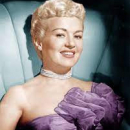
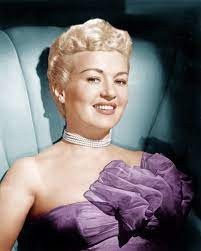
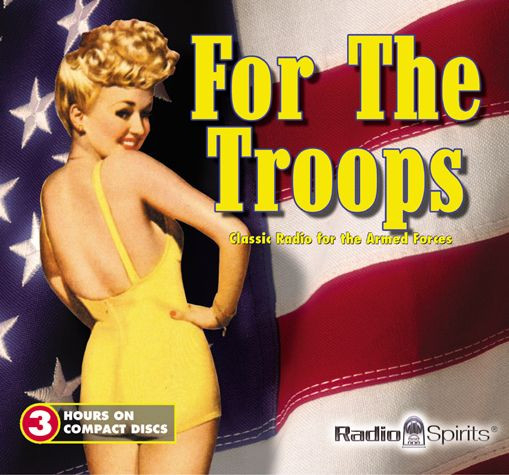
 Amanda S. Stevenson
Amanda S. Stevenson 